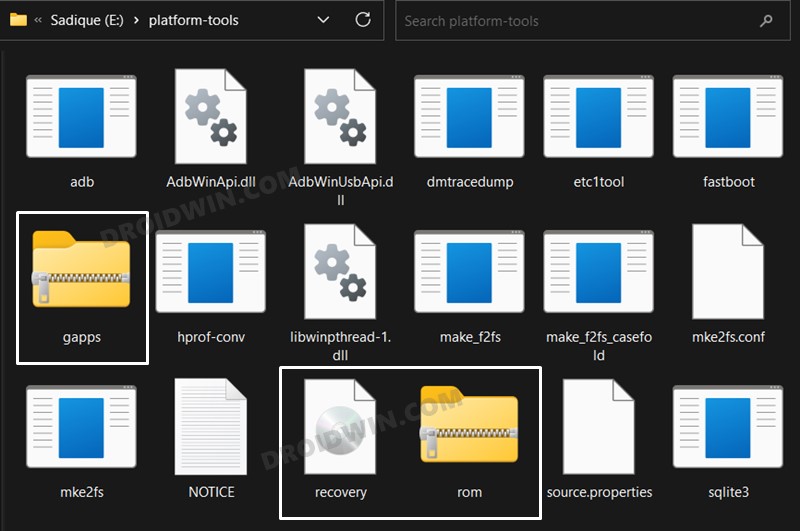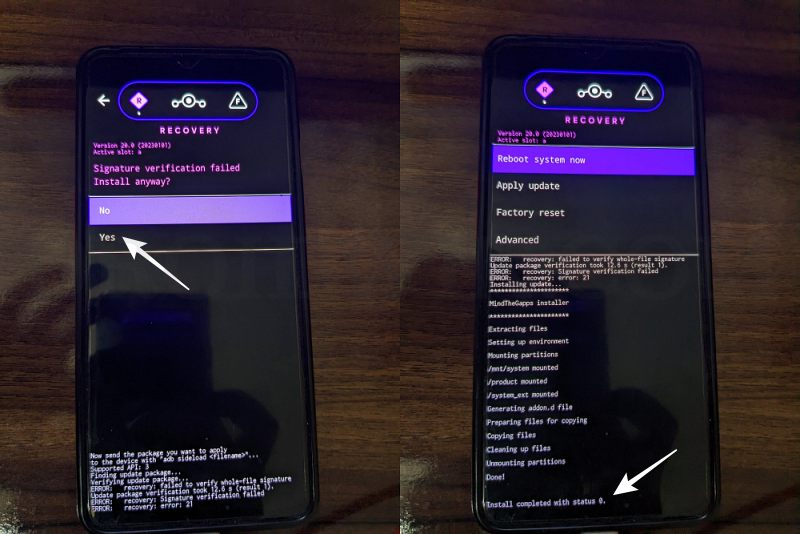In this guide, we will show you the steps to install the Project Elixir ROM based on Android 13 onto your OnePlus 7T. The seventh iteration of devices from the OEM is probably the last one in this lineup that truly held the essence and originality of OnePlus. However, it has now reached the EOL and will no longer be blessed with subsequent OTA updates.
For the tech enthusiast, that shouldn’t be a cause of concern as you could still welcome abode the latest OS build onto your device, albeit courtesy of an AOSP ROM. This will give you a clean stock OS experience with just the required features [much better than the stock OxygenOS or rather ColorOS]. So without any further delay, let’s make you aware of the steps to install the Project Elixir ROM based on Android 13 onto your OnePlus 7T.
Table of Contents
How to Install Project Elixir Android 13 on OnePlus 7T [Video]
Before starting with the process, make sure to take a complete device backup beforehand. Droidwin and its members wouldn’t be held responsible in case of a thermonuclear war, your alarm doesn’t wake you up, or if anything happens to your device and data by performing the below steps.
STEP 1: Install Android SDK
First and foremost, you will have to install the Android SDK Platform Tools on your PC. This is the official ADB and Fastboot binary provided by Google and is the only recommended one. So download it and then extract it to any convenient location on your PC. Doing so will give you the platform tools folder, which will be used throughout this guide.

STEP 2: Enable USB Debugging and OEM Unlocking
Next up, you will have to enable USB Debugging and OEM Unlocking on your device. The former will make your device recognizable by the PC in ADB mode. This will then allow you to boot your device to Fastboot Mode. On the other hand, OEM Unlocking is required to carry out the bootloader unlocking process.

So head over to Settings > About Phone > Tap on Build Number 7 times > Go back to Settings > System > Advanced > Developer Options > Enable USB Debugging and OEM Unlocking.
STEP 3: Unlock Bootloader
Next up, you will also have to unlock the device’s bootloader. Do keep in mind that doing so will wipe off all the data from your device and could nullify its warranty as well. So if that’s all well and good, then please refer to our detailed guide on How to Unlock Bootloader of OnePlus 7 series

STEP 4: Download ROM and Recovery
- First off, get hold of the Project Elixir Android 13 ROM for OnePlus 7T from below [GApps is already included]:
Project Elixir for hotdogb
- Now, the ROM doesn’t come with its own recovery. You’ll have to use either the LineageOS or Pixel Experience Recovery.
- So download the desired recovery from below [as for this guide, we will be using the LineageOS Recovery]
Lineage Recovery | Pixel Experience Recovery
- Once you have downloaded all these files, transfer them to the platform tools folder on your PC.

- Likewise, rename the recovery file to recovery.img and ROM to rom.zip.
STEP 5: Boot to Fastboot Mode
- Connect your device to the PC via USB cable. Make sure USB Debugging is enabled.
- Then head over to the platform-tools folder, type in CMD in the address bar, and hit Enter. This will launch the Command Prompt.
- After that, type in the following command in the CMD window to boot your device to Fastboot Mode
adb reboot bootloader

- To verify the Fastboot connection, type in the below command and you should get back the device ID.
fastboot devices

- If you are not getting any device ID, then make sure that Fastboot Drivers are installed on your PC.
STEP 6: Flash Recovery on OnePlus 7T
- You will now have to flash the LineageOS/Pixel Experience recovery onto your device. So execute the below command for the same:
fastboot flash recovery recovery.img

- Once the flashing is complete, type in the below command to boot to LineageOS/Pixel Experience Recovery.
fastboot reboot recovery

STEP 7: Factory Reset Device
- From the Recovery, go to Factory Reset > Format Data/Factory Reset > Format Data.

- Your device will now undergo a reset. Once done, you shall get the “Data wipe complete” message.

STEP 8: Install Project Elixir Android 13 ROM on OnePlus 7T
- From the Recovery, go to Apply Update > Apply from ADB.

- Then head over to the platform-tools folder, type in CMD in the address bar, and hit Enter.
- This will launch the Command Prompt. So type in the below command to flash the ROM file via Sideload:
adb sideload rom.zip
- The process will now begin and once it reaches 47%, you will get a Signature Verification failed message.
- This is because Project Elixir isn’t signed by LineageOS. That’s not an issue, just hit YES to proceed ahead.

- The flashing will now resume and once done, you will get the Total xfer: 1.00x message.

- So select Reboot System Now and your device will be booted to the newly installed OS.

That’s it. These were the steps to install the Project Elixir ROM based on Android 13 onto your OnePlus 7T. If you have any queries concerning the aforementioned steps, do let us know your doubt and the device that you are using in the comments. We will get back to you with a solution at the earliest.
- Android 13 Battery Drain Issue: How to Fix [10 Methods]
- Uninstall Updates missing for System Apps in Android 13: How to Fix
- How to access Android 13 Data and OBB folder & transfer files in them
- Third-Party/Sideloaded Apps crashing in Android 13: How to Fix
Fix: Error During ADB Sideload
If you get one of the below error messages, then it signifies a successful installation and you could reboot the device to the OS without any issues:
- Total xfer: 1.00x
- adb: failed to read command: Success/No error
- adb: failed to read command: No error
- (~47%) adb: failed to read the command: No error
- adb: failed to read command: Undefined error: 0


















